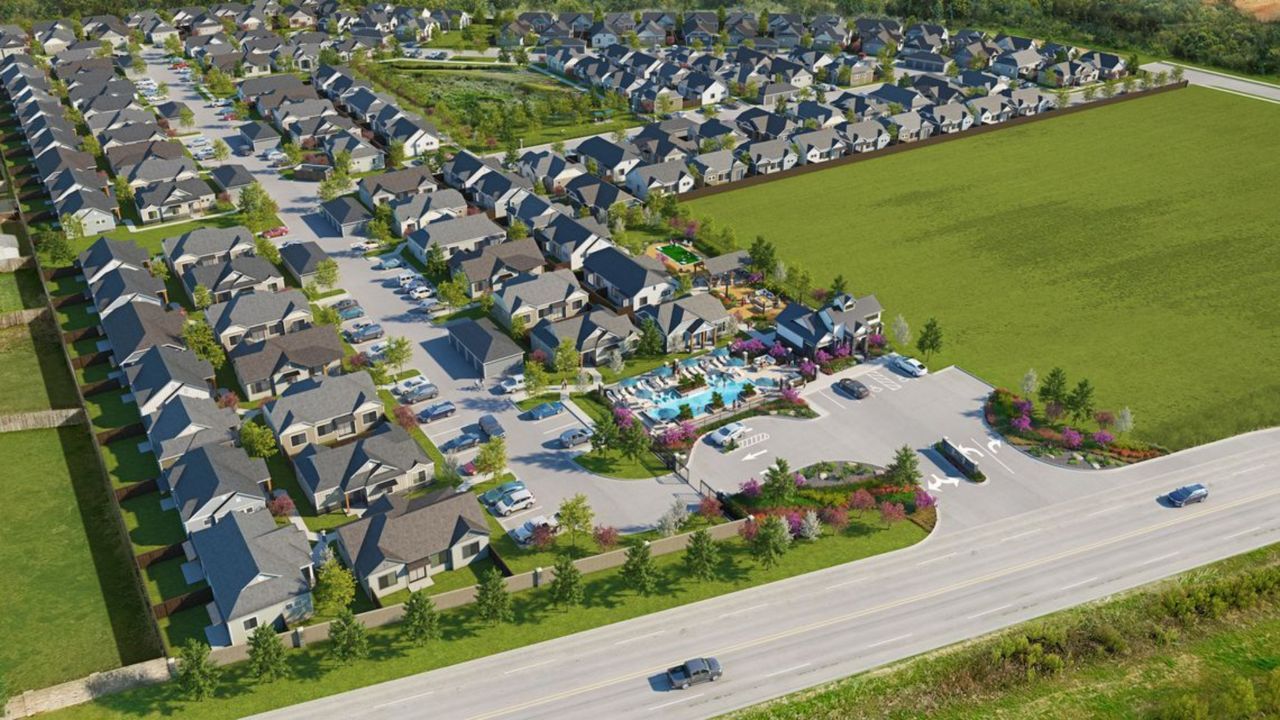Florida has long been home to the sprawl of suburbia — the landscapes of near-identical houses with emerald lawns are as quintessential to the state as its reptile-filled swamps.
But a new type of suburb is sprouting around Tampa Bay: those with new homes only for rent.
Even as the housing market has an insatiable demand of homes for sale, a growing contingent of companies is focusing on constructing built-for-rent subdivisions for what they describe as an equally hungry clientele that signs leases almost as quickly as the homes can be erected.
The built-for-rent trend started in Arizona, and after much success has been spreading, with rental communities appearing in Denver and then Texas, said Brad Hunter, founder and president of Hunter Housing Economics, which advises developers and investors.
“It’s like a tidal wave that is just about to crash on the beaches of Florida,” he said. “I see it suddenly hitting this year.”
Within Florida, Tampa Bay is a particular hot spot. The industry is exploding so quickly that solid numbers on built-for-rent neighborhoods are hard to come by, but Hunter is tracking nearly 20 communities, many still in their early development stages, from Ruskin to Port Richey.
Statewide, roughly 600 units were developed for rent last year, according to Hunter, who’s based in West Palm Beach.
“This year, it’s going to be multiples of that, and in 2022 it’s going to be magnitudes greater,” he said.
Before the Great Recession, renting out single-family homes on a large scale was considered an untested business model, with question marks about whether it would be too costly to manage scores of spread-out houses compared to dense apartment complexes. But after the market crashed and left a glut of homes for sale, now-behemoth corporations like Invitation Homes bought up thousands of houses and rented them out to tenants, proving with their profit margins that the idea was feasible.
When the housing market recovered and cheap houses became harder to find, the built-for-rent concept was born. Hunter said the industry first started around 2012, but the past five years is when it’s picked up the most speed.
“All the data coming out of the industry proves it’s a very strong, reliable business,” said Meredith Delcamp, a partner at Shutts & Bowen’s Tampa and Sarasota offices who’s been working with the single-family rental industry for years. “In the last two years, (built-for-rent) is all anyone will talk about.”
Delcamp said that the young industry is evolving all the time — and lately both the coronavirus pandemic and the hyper-competitive housing market have increased demand for rental houses.
With more people working or attending school from home, young families are looking to branch out from apartments and get more space, she said.
Plus, buying homes has gotten more expensive. Florida is an attractive market to built-for-rent developers because of its population influx with out-of-staters moving south combined with the market’s desirability and low supply, she said.
“Currently speaking, it’s very difficult to buy a home. There’s so much demand,” Delcamp said. With rental houses, “you can still live in community you want to live in ... while the market is stabilizing.”
Lately, even some homebuilding companies have expressed interest in also becoming landlords, such as Miami-based Lennar and Toll Brothers, according to Delcamp. Renting out new homes, with brand new roofs and appliances, also mitigates the typical maintenance concerns and overhead costs that comes with managing lots of houses.
In the past, critics have accused the single-family rental industry of gobbling up too many houses that would otherwise be homes for first-time buyers, keeping more people in the rental market and preventing them from building generational wealth. The industry countered that their properties make up a small percentage of the total American housing stock, and single-family rentals allow families who couldn’t otherwise afford to buy a house to be able to live in neighborhoods of their choosing, which often come with access to better schools.
Cheryl Howell, director of Affordable Housing for Hillsborough County, previously said she was concerned about a rental company, Lafayette Real Estate, buying homes in Tampa, because they were clustered in some parts of the city that had more minority residents and higher poverty rates.
But the addition of built-for-rent subdivisions, she said, is positive for Tampa Bay’s housing market.
“We don’t just have an affordable housing issue, we have a housing supply issue, so that adds to the bottom line of the housing supply,” she said.
The fact that built-for-rent communities are new homes in Tampa’s suburbs rather than the conversion of existing homes into rentals is “a huge difference,” Howell said. “They’re not taking those units out of the market, so to speak, for a higher income group. This is actually adding to the number of units.”
One of the Tampa Bay area’s most high-profile upcoming communities is Avilla Suncoast, which is being built and managed by NexMetro, a well-known name in the built-for-rent world as a company that helped originate the concept.
The 152-unit community in Odessa is under construction, with leasing expected to begin by the end of this year.
“Avilla Suncoast is our plant-the-flag-in-the-ground community in the Tampa market,” said William Hulton, NexMetro’s vice president of development for Florida.
But there will be more: not including Avilla Suncoast, NexMetro has around 1,200 homes slated to be built across Pasco, Hillsborough and Manatee counties, Hulton said.
Although the homes are designed to get renters out of the “big box multifamily feel” with shared walls, he said, the amenities of NexMetro’s subdivisions are reminiscent of upscale apartment complexes, with a community pool and spa as well as a dog park. Tenants will also have their own garages, and the company handles all maintenance.
While the industry as a whole caters to three groups of people — families who can’t afford to own, families opting not to own, and retirees — Hulton said NexMetro’s renters are mostly the latter two groups.
“We have a strong demographic that is affluent young professionals, whether single or married,” he said. “Consumers have, in the last decade, fundamentally changed the way they think about the American Dream ... For a growing number of people, that means choosing to rent rather than own.”
To get more news and information from this partner, subscribe here.




